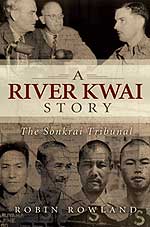The Pentagon, or Centcom, or someone named the current U.S. anti-insurgency offensive on the border between Iraq and Syria "Operation Matador."
The BBC says:
The US has said its forces have cleared an area in north-west Iraq of insurgents following a week-long operation codenamed Matador.And the BBC goes on to quote a U.S. spokesman as saying:
The Americans said they had killed more than 125 rebels, for the loss of nine of their own men.
"During Operation Matador, marines, sailors and soldiers neutralised this sanctuary, killing more than 125 insurgents, wounding many others, and detaining 39 insurgents of intelligence value," the US military said in a statement.
So what's in a name, Oh Pentagon? There was, once, another "Operation Matador" and that was Britain's plan in late 1941 for a pre-emptive strike from Malaya into Thailand to stop a Japanese landing. British intelligence correctly predicted that the main Japanese forces under the command of Lt. Gen. Yamashita Tomoyuki would land at the Thai ports of Singora and Patani and then begin a lightning offensive down the highways into Malaya.
If Britain had moved troops into Thailand and taken the ports, it might have stalled the Japanese attempt to take Southeast Asia.
But, of course, it never happened. Neither London nor Malaya Command could make up their minds what to do as the Japanese threat increased. The Foreign Office didn't want to do anything that could trigger a war with Japan or offend Thailand.
The dithering over Matador meant that the front line British troops had conflicting objectives, either defending the Malayan border or an offensive into Thailand. In early December, 1941, London finally gave the commander-in-chief, Air Marshal Sir Robert Brooke-Popham orders that he could decide to launch Matador.
Brooke-Popham's decision day was December 7, 1941 (Malaya time). The British had recieved the first indications of the Japanese invasion fleet in the Gulf of Thailand at 2 p.m. December 6, 1941 (Malaya time). If Brooke Popham ordered Matador, it would take 24 hours for the British troops to reach the Thai ports. He dithered and consulted, then at 11 p.m. on December 7, 1941, Brooke-Popham postponed Matador, told the front line troops, the III Indian Corps, to be in defensive positions but be ready to execute Matador.
At that moment off Pearl Harbor, Hawaii, the USS Ward was searching for a possible Japanese submarine.
By then it was too late.
The first Japanese troops were spotted off Kota Bahru, Malaya, the third landing site at 11:45 p.m. December 7, 1941. It was 5:45 a.m. December 7, 1941, Hawaii time and the first two Japanese reconnaissance aircraft were taking off from the Japanese carriers to scout Pearl Harbor.
The first Japanese troops landed at Singora at 2 a.m. December 8, 1941, 7 a.m. in Oahu, the same moment that the U.S. Army radar truck at at Opana picked up the incoming Japanese attack force--and the men manning the radar were told it was a scheduled flight of B-17s.
Historians who study the Second World War in Southeast Asia have long debated what would have happened if Britain had authorized Matador and met the Japanese invasion force on the beaches and harbours of those two Thai cities.
So far the media reports show that the U.S. says their Matador is a success. It may be "mission accomplished" or it may not be.
But once again you have to wonder how the Pentagon choses the names for operations. After all in an alternate universe, if there had been a 1941 Operation Matador, what might have happened at Pearl Harbor?
Technorati Tags
Iraq, Thailand,Japan, World War II, conflict, war, military




